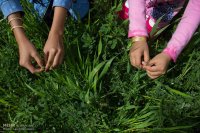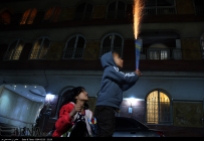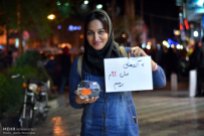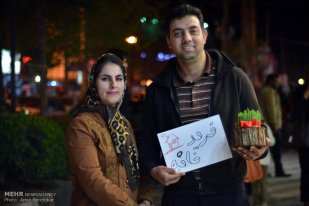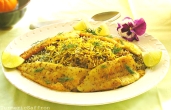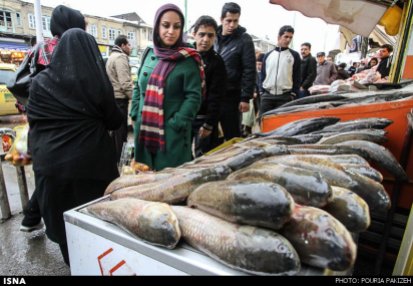Nowruz (meaning Now=new and ruz=day “The New Day”) is the name of the Iranian New Year. It marks the first day of spring (March equinox) and the beginning of the year in the Persian calendar. It is officially registered on the UNESCO List of the Intangible Cultural Heritage of Humanity.
Nowruz is celebrated by people from diverse ethnic communities and religious backgrounds for thousands of years. It is a secular holiday for most celebrants that is enjoyed by people of several different faiths, but remains a holy day for Zoroastrians. It is also celebrated by the cultural region that came under Iranian influence.
Countries that have Nowruz as a public holiday include the following: Afghanistan, Albania, Azerbaijan, Georgia, Kosovo, Kyrgyzstan, India, Iran, Iraq (Iraqi Kurdistan), Kazakhstan, Mongolia (regional state holiday only), Pakistan, Tajikistan, Turkmenistan and Uzbekistan.
Nowruz traditions
Spring cleaning, or Khouneh Tekouni (literally means ‘shaking the house’) or ‘complete cleaning of the house’ is commonly performed before Nowruz. Persians and Kurdish and Lure Kurdish, Azerbaijanis, and start preparing for the Nowruz with a major spring-cleaning of their houses, the purchase of new clothes to wear for the new year and the purchase of flowers (in particular the hyacinth and the tulip are popular and conspicuous).
In association with the “rebirth of nature”, extensive spring-cleaning is a national tradition observed by almost every household in Iran. This is also extended to personal attire, and it is customary to buy at least one set of new clothes. On the New Year’s Day, families dress in their new clothes and start the twelve-day celebrations by visiting the elders of their family, then the rest of their family and finally their friends. On the thirteenth day families leave their homes and picnic outdoors, as part of the Sizdah Be-dar ceremony.
During the Nowruz holidays, people are expected to visit one another (mostly limited to families, friends and neighbors) in the form of short house visits, which are usually reciprocated. Typically, on the first day of Nowruz, family members gather around the table, with the Haft Sīn on the table or set next to it, and await the exact moment of the arrival of the spring. At that time gifts are exchanged. Later in the day, the first house visits are paid to the most senior family members. The youth will visit the elders first, and the elders return their visit later. When in previous year, a family member is deceased, the tradition is to visit that family first (among the elders).
The visits naturally have to be relatively short, otherwise one will not be able to visit everybody on their list. A typical visit is around 30 minutes, where you often run into other visiting relatives and friends who happen to be paying a visit to the same house at that time. Because of the house visits, you make sure you have a sufficient supply of pastry, cookies, fresh and dried fruits and special nuts on hand, as you typically serve your visitors with these items with tea or sherbet.
Click a photo and browse to the gallery to see the different elements of the Haft-Sin and their symbolic meaning:

Haft Sin Table

Sabzeh – Representing rebirth and fertility

Senjed (Dried Fruit of the Lotus Tree) – Representing love

Seer (Garlic) – To ward off bad omens

Sekkeh (Coins) – Representing wealth and prosperity

Mahi Ghermez (Goldfish) – Representing life

Noghl (sugar coated almonds)

Narenj (Seville Orange) in Water – Representing the earth floating in space

Samanoo (wheat pudding) – Representing the reward of patience and the sweetness of life

Somagh (Sumac) – Representing the spice of life

Divan of Hafez (world famous Iranian poet)

Tokhm-e Morgh Rangi (painted eggs) – Representing Fertility

Sonbol (Hyacinth) – Representing spring

Haft Sin Table
Haft Sīn (haft=seven and sīn=s “The seven ‘S’s”) is the traditional table setting of Nowruz. The Haft Sīn items are:
– Sabzeh: wheat, barley or lentil sprouts growing in a dish, symbolizing green environment, happiness and rebirth.
– Samanu: a sweet pudding made from germinated wheat, symbolizing affluence.
– Senjed: the dried fruit of the oleaster tree, symbolizing firmness and tolerance.
– Sīr: garlic, symbolizing health.
– Sīb: apples, symbolizing beauty and love.
– Somaq: sumac berries, symbolizing patience.
– Serkeh: vinegar, symbolizing development and evolution.
Other symbolic items can be:
– Sekkeh: coins, representing wealth
– Lit candles, representing enlightenment and sunrise.
– A mirror, symbolizing cleanliness and honesty
– Decorated eggs, sometimes one for each member of the family, symbolizing fertility
– A bowl of water with goldfish, representing life within life, and the sign of Pisces which the sun is leaving. As an essential object of the Nowruz table, the goldfish is also “very ancient and meaningful” and with Zoroastrian connection.
– Rosewater, symbolizing purity and cleanness.
– The national colours, for a patriotic touch
– A holy book (e.g., the Avesta, Qur’an or Kitáb-i-Aqdas) and/or a poetry book (almost always either the Shahnameh or the Divan of Hafiz)
Sources: Wikipedia | Nowruz, Tumeric & Saffron (1), Tumeric & Saffron (2)


















